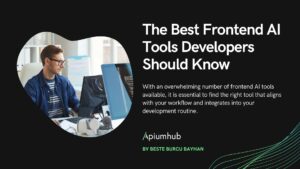Table of Contents
Observability best practices in software development are fundamental pillars that enable developers to gain profound insights into the internal dynamics of a system by scrutinizing its outputs, logs, and other external indicators. In an era where software systems are becoming increasingly intricate and multifaceted, observability serves as a critical tool for comprehending, troubleshooting, and refining these complex structures.
By employing observability techniques, developers can effectively monitor the behavior of their applications in real time, identify anomalies or performance bottlenecks, and diagnose issues promptly.
Moreover, observability facilitates proactive problem-solving, allowing developers to anticipate potential challenges and implement preemptive measures to enhance system resilience and reliability. In essence, observability best practices are indispensable for ensuring the robustness, scalability, and maintainability of modern software systems in the ever-evolving landscape of technology. Keep reading to learn more about the observability best practices used in the field of software development!
Observability Best Practices Commonly Employed in Software Development
- Logging
Structured Logging: Use structured log formats that allow for easy parsing and analysis. Include relevant information such as timestamps, log levels, and contextual data.
Centralized Logging: Aggregate logs from all components of your system in a centralized location for easy analysis and correlation.
- Monitoring
Metrics: Define and measure key performance indicators (KPIs) and other relevant metrics in your application. Use tools like Prometheus, Grafana, or Datadog to collect, visualize, and alert on these metrics.
Alerting: Set up alerts based on predefined thresholds for metrics. This helps identify and address issues before they impact users.
- Tracing
Distributed Tracing: Implement distributed tracing to track requests as they traverse different components of a distributed system. Tools like Jaeger or Zipkin can help visualize and analyze the flow of requests.
Correlation IDs: Attach unique identifiers to requests and log entries, making it easier to trace a specific request across different services.
- Instrumentation
Code Instrumentation: Add instrumentation code to your application to collect performance data and insights. This may include logging specific events, measuring execution times, or capturing resource utilization.
A/B Testing: Use feature flags and A/B testing to introduce new features gradually and measure their impact on performance and user experience.
- Error Tracking
Error Logging: Capture and log errors systematically, including relevant information such as stack traces, error messages, and the state of the system when the error occurred.
Error Monitoring: Utilize tools like Sentry, Rollbar, or Bugsnag to monitor and alert on errors in real-time.
- Infrastructure Observability
Container Orchestration Monitoring: If using container orchestration platforms like Kubernetes, monitor the health and performance of containers and orchestration components.
Cloud Service Monitoring: Leverage cloud provider tools and services for monitoring infrastructure components in cloud environments.
- Documentation
Runbooks: Create runbooks and documentation for common troubleshooting scenarios. Ensure that on-call teams have access to this information to respond effectively to incidents.
- Collaboration:
Collaboration Platforms: Use collaboration platforms to facilitate communication and coordination among development, operations, and support teams during incidents.
In conclusion, observability best practices are essential components of successful software development strategies in today’s increasingly intricate technological landscape. By embracing observability principles, developers empower themselves to delve deep into the inner workings of complex systems, enabling them to swiftly identify, diagnose, and rectify issues as they arise. Through the meticulous examination of system outputs, logs, and external indicators, developers gain invaluable insights that not only streamline the debugging process but also pave the way for optimization and continuous improvement.
As software systems continue to evolve and scale, the adoption of observability best practices becomes not merely advantageous but imperative for ensuring reliability, scalability, and resilience. Embracing observability best practices is not merely a choice but a necessity for staying ahead in the dynamic realm of software development.
At Apiumhub, we excel in the field of software development and implement top-tier observability practices. Trust us to handle your intricate software projects with confidence.
Author
-
Ekaterina Novoseltseva is an experienced CMO and Board Director. Professor in prestigious Business Schools in Barcelona. Teaching about digital business design. Right now Ekaterina is a CMO at Apiumhub - software development hub based in Barcelona and organiser of Global Software Architecture Summit. Ekaterina is proud of having done software projects for companies like Tous, Inditex, Mango, Etnia, Adidas and many others. Ekaterina was taking active part in the Apiumhub office opening in Paseo de Gracia and in helping companies like Bitpanda open their tech hubs in Barcelona.
View all posts









